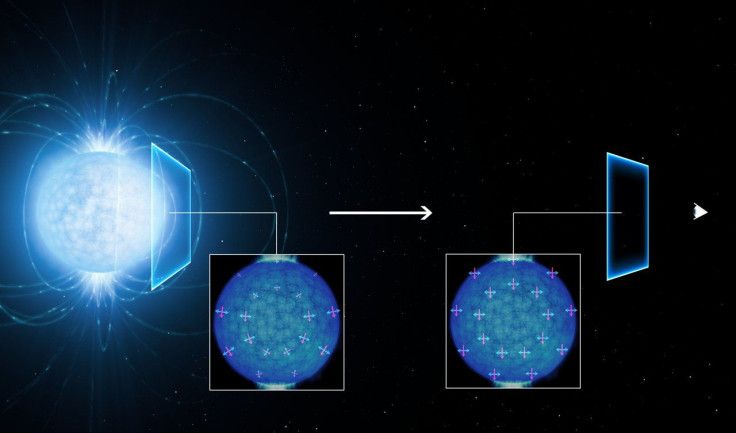Neutron Star Provides First Observational Evidence Of ‘Vacuum Birefringence’ In Empty Space

Back in 1930, Werner Heisenberg and Hans Heinrich Euler predicted the existence of a weird phenomenon known as “vacuum birefringence,” wherein a strong magnetic field can affect the polarization of light. Now, this 80-year-old prediction of quantum electrodynamics (QED) — the theory that describes, among other things, the interaction between matter and light — has finally been observed in nature.
Using the European Southern Observatory’s Very Large Telescope (VLT) in Chile, a team of researchers were able to observe a nearby neutron star — ultra-dense corpses of massive stars —affecting the polarization of light passing through the “empty” space around it. This empty space is in fact filled with virtual particles that are constantly appearing and vanishing — a phenomenon also described by QED.
When the researchers analyzed the VLT data, they found that the light passing through the highly-magnetized space around RX J1856.5-3754 — a neutron star located just 400 light-years from Earth — was polarized by about 16 percent. According to a study detailing the observations, published Friday in the Monthly Notices of the Royal Astronomical Society, this can only be explained if vacuum birefringence caused by the neutron star’s extreme magnetic fields is taken into account.
“According to QED, a highly magnetised vacuum behaves as a prism for the propagation of light, an effect known as vacuum birefringence,” lead researcher Roberto Mignani from the Istituto di Astrofisica Spaziale e Fisica Cosmica Milano in Milan said in a statement. “The high linear polarisation that we measured with the VLT can’t be easily explained by our models unless the vacuum birefringence effects predicted by QED are included.”
It is not yet clear if this discovery would change our current understanding of how things work in the quantum realm. However, it would significantly advance astronomers’ study of neutron stars, and provide invaluable data about how these bodies form and evolve.
“Polarisation measurements with the next generation of telescopes, such as ESO’s European Extremely Large Telescope, could play a crucial role in testing QED predictions of vacuum birefringence effects around many more neutron stars,” Mignani said.
© Copyright IBTimes 2025. All rights reserved.






















